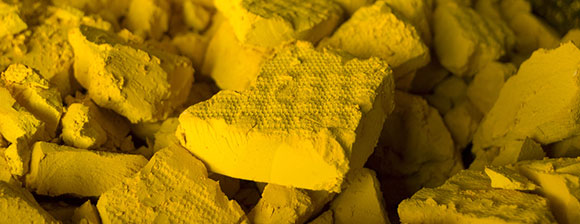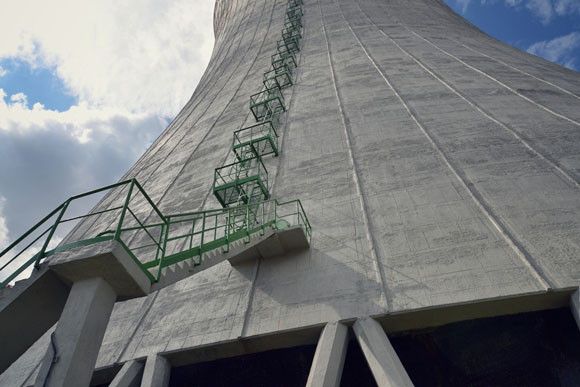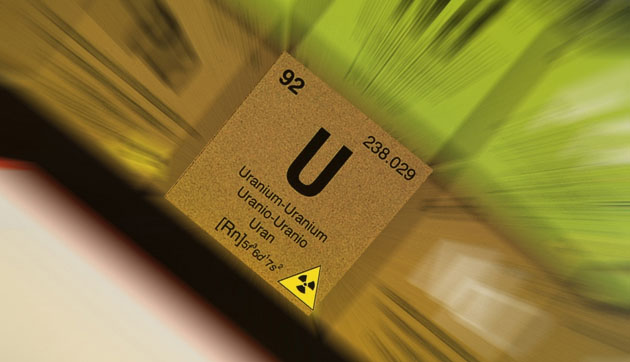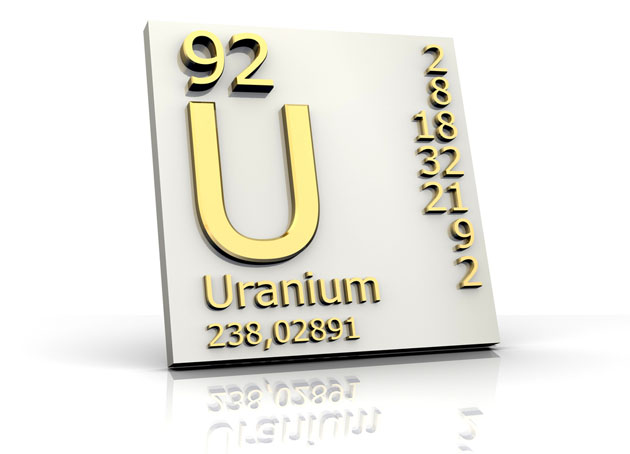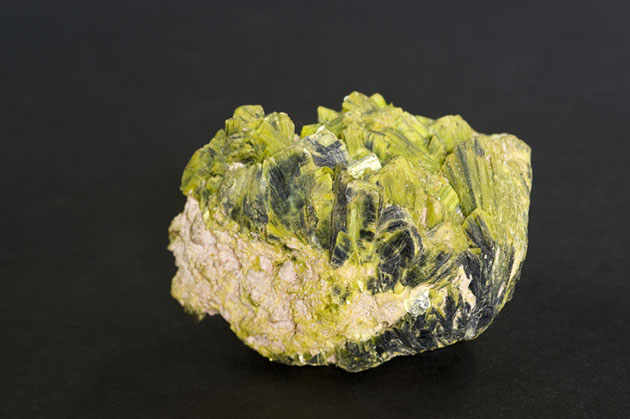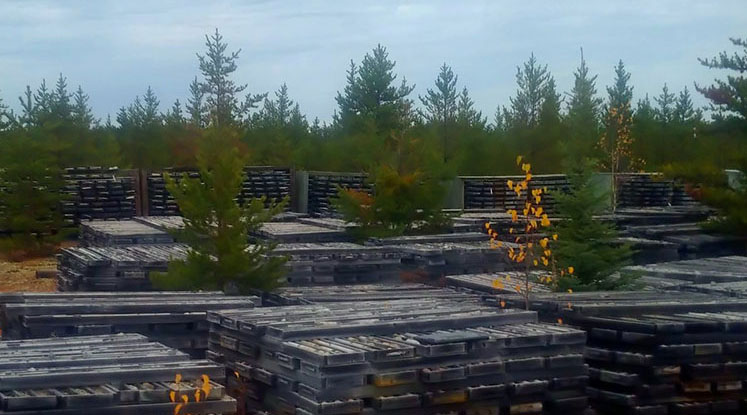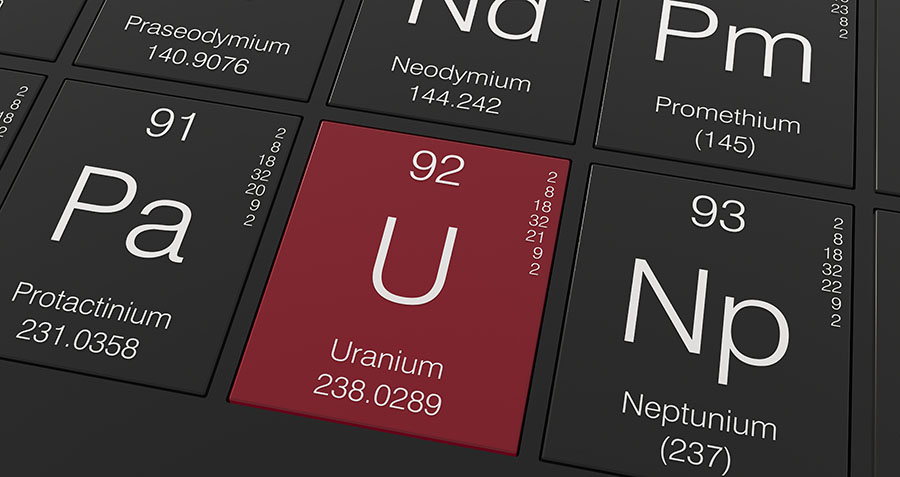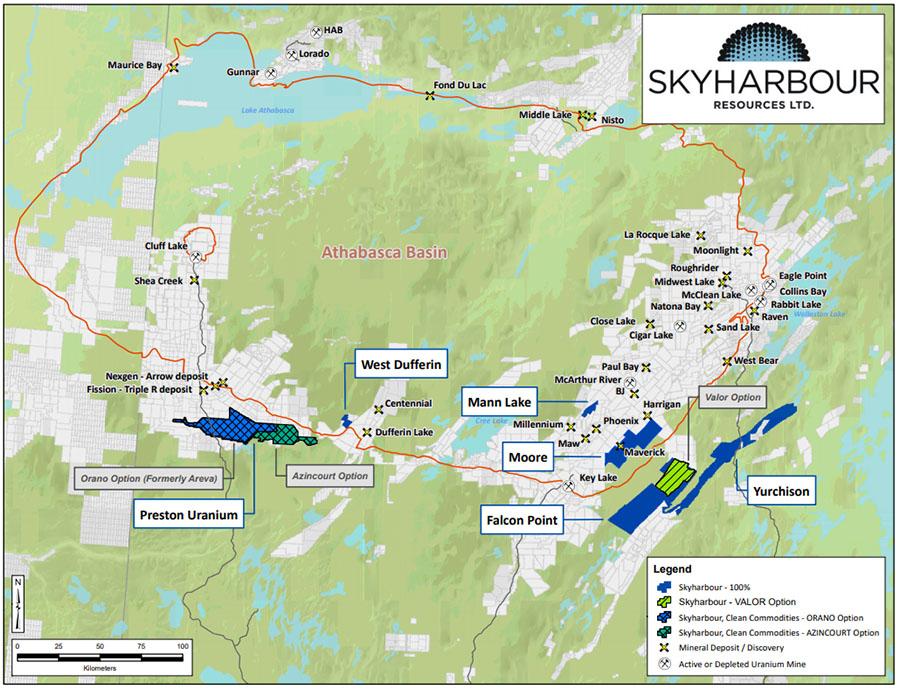The Energy Report: Will the no-longer hypothetical restart of the Japanese nuclear reactors move uranium prices into the production range?
Leigh Curyer: The restart of the first reactor since Fukushima is very good for our business, psychologically. Japan does not have the capacity to fill its power grid with fossil fuels. It needs nuclear power to provide the country with sustainable and cheap power. On top of that, the carbon emissions from fossil fuels are not sustainable globally. Another positive of the reactor restart, beyond the psychological effects, is the fact that there was a fear that Japan was going to flood the market with some of its stockpiled uranium. But that fear has now been predominately removed. There are a number of Japanese reactors in the final stages of safety review and approval, which should only help to eliminate that risk of Japan's stockpiles entering the spot market.
"Because Arrow is high grade, basement-hosted and land-based, we believe it will also be competitive on the global stage."
The demand side issue is much bigger than Japan. There are 63 reactors under construction worldwide. Nuclear energy is forecast to grow at 2–4% per annum globally according to both the International Energy Association (IEA) and the World Nuclear Association (WNA). On the supply side, roughly 90% of the world's primary production is either under a severe technical or sovereign risk. There have been major interruptions on the supply side, with Energy Resources of Australia Ltd.'s (ERA:ASX) Ranger Deeps not going ahead, and supply interruptions at the Olympic Dam mine (BHP Billiton Ltd. [BHP:NYSE; BHPLF:OTCPK]) and also at the Rössing mine. Obviously, the world needs more uranium mines to come on line—particularly mines with low cost structures from stable jurisdictions. Saskatchewan is arguably the best jurisdiction in the world for mining, and specifically uranium mining. Additionally, it is the home of high grade and high tonnage. Grades seen in the Athabasca Basin are regularly in excess of 100 times that of average global production. Cameco Corp. (CCO:TSX; CCJ:NYSE) remains one of the lowest-cost producers of uranium due to the grades seen at its mines.
TER: Do you have a prediction on where the price of uranium is headed?
LC: It's hard to put a specific number on any commodity in my view, but at NexGen Energy Ltd. (NXE:TSX.V; NXGEF:OTCQX) we feel strongly that the price of uranium will rise based on the worldwide production cost structure. Based on our estimates, marginal global production costs on average are in the mid-US$60s per pound (mid-US$60/lb); hence, the current spot and term price remaining below this level means that production should start to come offline as term contracts expire. It's a fairly straightforward supply-demand equation really.
TER: Is NexGen Energy counting on the price stabilizing above US$60/lb, or can you deal with the price being a little lower?
LC: NexGen's Arrow project does not yet have a feasibility study or an NI 43-101 resource estimate, but we are confident that, given the early development results at Arrow and the technical characteristics it hosts, the project will be incredibly competitive on a world scale. Arrow is an extremely high-grade asset situated amid comfortable mining conditions. The mineralization is hosted in competent basement rocks commencing from 100 meters (100m) from surface, which creates the opportunity for simple and traditional mining scenarios as opposed to the challenging conditions Cameco has had to overcome at its Cigar Lake mine on the east side of the Basin. Our focus moving forward is to define the mineralization with a resource estimate in the first half of 2016, and then determine the project's economic potential soon thereafter.
Travis McPherson: There is a good analogy to Arrow on the east side of the Basin with a mine called Eagle Point, which is owned and operated on a 100% basis by Cameco. The geological characteristics of the Eagle Point mine are similar to our Arrow project, even in its early stage of development. Eagle Point is producing about 4 million pounds a year (4 Mlb/year) at a grade of 0.57–0.6% uranium at approximately 500m below surface, with plans to go toward 800m.
Cameco wouldn't be producing out of that mine unless it was competitive in terms of its operating costs. Although we still need to prove it with the necessary studies, because Arrow is high grade, basement-hosted and land-based, we believe it will also be competitive on the global stage, just like Eagle Point.
TER: You have been reporting lots of good news from Arrow. What are the details?
LC: Late in the winter 2015 drill program, we released an assay on Hole AR-15-44B at Arrow that had 56.5m at 11.55% U3O8, including 20m at 20.68%—and even included 1m at 70%. The continuous GT (grade times thickness) of that hole is one of the largest on public record for a basement-hosted uranium intercept in the Basin.
"We have formed great partnerships through the development of NexGen."
We were so encouraged with these results that we decided to be quite bold in testing the extensions of Arrow to the southwest of 44B. A stepout of 15m is considered bold in this particular environment. We have stepped out to 50, 100 and 210m to the southwest of 44B, and hit intensive, off-scale radioactivity in all three of those stepouts. Now, for the remainder of the summer program, we intend to further define this new high-grade mineralized extension within Arrow. To be frank, Arrow continues to surpass what we previously estimated. It feels like we are still just scratching the surface of Arrow.
Source: CEO ClipsTER: What clued you in to the existence of this bonanza?
LC: One, it's located in the Athabasca Basin, which is the home of high grades and high tonnage. We spent three years reviewing over 200 properties in the Basin prior to starting NexGen. We selected the properties in NexGen's portfolio because they straddle the edge of the Athabasca Basin boundary and also go into the Basin. This is where you find your most economic mineralization. Additionally, the portfolio covers all the known conductor corridors in the southwest. Finally, the majority of the properties in the southwest were put together by a well-respected geologist based on scientific merit.
Our geophysical studies revealed numerous strong anomalies on the Rook 1 property. And with the very first drill hole on the Arrow geophysical anomaly, we hit mineralization. We then stepped out aggressively, upward of 200m, and continued to hit mineralization. That was in February 2014. Since then, we have drilled a number of holes using a deliberate drilling methodology, with the goal of Arrow becoming the lowest-cost discovery of size in the Basin's history. We have hit in 95% of holes drilled across a very wide grid.
TER: Were you able to pick up these properties at a discount due to the Fukushima situation?
LC: They were not as expensive as they otherwise would have been. But also, with the technical team that we have on board, the seller was more than happy to come under our tutelage given our experience in the uranium sector. We have formed great partnerships through the development of NexGen.
TER: What level of operational and financial experience does your management team bring to the business?
LC: Our team covers all facets of discovery, feasibility, permitting and production. Chris McFadden, our chairman, was the head of business development at Rio Tinto Plc (RIO:NYSE; RIO:ASX; RIO:LSE; RTPPF:OTCPK), covering the uranium division and operations. On the Board of Directors, we also have Craig Perry, who is a geologist and was at Rio Tinto and then Oxiana Ltd., which was merged with Zinifex Ltd. in a $12 billion deal to create OZ Minerals Ltd. (OZL:ASX). We also have Jim Currie from a mining engineering perspective; he won the 2014 E.A. Scholz Award for excellence in mine development for his involvement at New Afton (New Gold Inc. [NGD:TSX; NGD:NYSE.MKT]). We really could not have a better-qualified mining engineer on the board to oversee the move into production.
"Arrow is conventional, with simple metallurgy, which should help simplify the permitting process."
I have worked in the uranium sector since 2002 as a chief financial officer for Southern Cross Resources. While there, I worked on feasibility and permitting of the Honeymoon project in South Australia, as well as a number of merger-and-acquisition transactions, which eventually led to us forming Uranium One Inc. I left six months after that transaction and spent the next three years in private equity, working for First Reserve International and looking at uranium projects around the globe from a technical, economic and sovereign risk perspective. I have generated project capital for mines of the size and magnitude that Arrow will likely be.
When we discovered Arrow we approached Garrett Ainsworth, and he came on board as our vice president of exploration. Garrett's contribution to the discovery of Patterson Lake South (now Triple R) is evident from the Association for Mineral Exploration, British Columbia (AME BC) Colin Spence award that he won in 2013. Given Garrett's track record in uranium discovery in the southwest Athabasca Basin, we approached him after only eight holes, and he immediately agreed. Given our hit rate and the rate of development at Arrow, it is clear that he and the rest of the technical team understand the mineralization.
TER: What is the stage of the Arrow permitting process?
LC: We are about to conduct baseline environmental monitoring studies at Arrow, which will form the basis of an eventual environmental application. First, we have to define the size of the asset, which we will get an initial feel for with the maiden resource planned for H1/16. Then we can get a better idea about initial aspects of mineability, which will provide a basis for preliminary scoping work and eventual feasibility studies. Once we have a firm idea of the scope and scale of the project we will work on submitting permits.
TER: Do you see any obstacles to permitting?
LC: Not any major obstacles. Saskatchewan is, in my opinion, the best jurisdiction in the world in which to permit and operate a uranium mine. Arrow is conventional, with simple metallurgy, which should help simplify the process. Due to the fact that the mineralization doesn't affect any water body, Arrow is showing the characteristics of an underground operation, as are all the current operating mines in Saskatchewan. Mineralization starts from 100m of surface down to 920m, and is open in every direction. It is hosted in competent basement rocks the whole way, which makes it amenable to traditional underground mining methods. We do not foresee any major land or water surface issues.
During the 1990s, the Cluff Lake mine, located 70 kilometers (70km) northwest of Arrow, produced 60 Mlb of 0.9% uranium. The region's regulators are familiar with permitting a mine and plant in the southwest. The nearest town is 155km away, so our footprint will have no impact on human or agricultural activities. The southwest Basin is actually an ideal place for permitting a uranium mine and mill.
TER: What is the mining infrastructure like in the area?
LC: The biggest piece of infrastructure we will need is a mill. Given that there's a brownfields site 70km to the northwest at Cluff Lake, and the fact that the area where Arrow is located is actually quite benign, there are a number of sites that would be appropriate for a mill. Additionally, given the size profile of Arrow, the area would justify its own mill.
As far as other infrastructure goes, there is a 240km all-weather highway that runs right near our project, which was put in place just to service the Cluff Lake mine. Power is located about 80km from Arrow. There is a strong labor force in the region, and also access to water. We will need to develop some infrastructure at the site, but it is not a grassroots situation; nothing too costly or challenging.
TER: How is NexGen financing these plays?
LC: We have issued equity. In April, we closed a $27.3M bought-deal financing, which brought in a lot of institutions from outside Canada. We are well financed through 2017 given our current development plan and our treasury. We also have some warrants that are currently well in the money that could extend the financing period even longer.
"We are pure-play uranium professionals who feel fortunate to be working on an asset like Arrow."
Going into production, we will, of course, need a larger capital component. But given our team's background in mining finance and development, I believe we are well situated for that when the time comes. Arrow's characteristics show that it could be one of the most desirable uranium projects in the world, and these types of projects attract capital and get built.
TER: When are you looking to go into production?
LC: It is quite early to be precise with that figure, but we believe post-2020 would be an accurate schedule, and one that fits well with our forecast of uranium fundamentals. Based on estimates from the IEA and the WNA, post-2020 is when major supply deficits are expected, given relatively stable demand growth and a very challenging supply. We will have our hands full until then, doing the feasibility study and permitting, and optimizing the economics of the project.
TER: Do you anticipate taking on any debt before going into production?
LC: As we are pre-revenue, taking on a debt facility is challenging given the interest and principal payments that must be made. We are focused on equity financing for the time being, as it is the most compatible form of capital for our business strategy at this time. When the time to push the production button arrives, we will assess the best financing option at that time, and that could include a debt component. But again, much more work is needed to determine that.
TER: Do you anticipate selling the Arrow project to a major, or do you intend to take it forward yourselves?
LC: NexGen's management and board have all the skills needed to take this project through to production. We will bring in additional uranium professionals at certain points of development as needed and as the project develops into engineering and permitting.
We are pure-play uranium professionals who feel fortunate to be working on an asset like Arrow. Given the early stage of its development, it would be hard for the board to recommend a bid because we don't know the true size of Arrow yet. Additionally, with our full land holdings, we believe the potential for multiple Arrows is self evident, in which case our properties could create one of the most valuable uranium land holdings in the Basin.
TER: What's the next milestone in the development of your project?
LC: The initial resource on Arrow will help give us an idea of the size and grade profile of the asset. We will continue to post drill results throughout the fall and into early next year. Those results will culminate in the initial resource, which will emerge in Q1/16 or Q2/16. A consequence of the large stepouts is that we now have to do a lot more drilling between AR-15-44B and the 210m stepout to incorporate the extended strike length into a resource model. We are busy executing our plan to do that at the moment.
Because we have been so efficient with drilling, as a result of utilizing directional drilling, we are going to expand the summer program to take advantage of the summer conditions, and also to have enough pierce points in the southwest strike extensions to include that in the maiden resource estimate.
TER: How has your stock been performing? Why should investors buy NexGen now instead of waiting for more developments?
LC: The stock has been performing very well compared to its peers. We are up about 65% from the start of the year, but still feel there is a lot of upside remaining in the price. I think the speed at which NexGen has developed has caught the market off guard, even though we have doubled on the year. People might ask, with only 50-odd holes, how can we predict such size and scale at Arrow? The unique thing about our drilling methodology is that it's very rare to start out with such a bold stepout program across a uniform grid and hit mineralization in 95% of the holes. It tells you two things: One, our technical team understands the geology and the system well; and two, the system itself is quite large. This is highlighted by the recent tripling of the high-grade strike extension with the 50, 100 and 210m stepouts.
The other thing about Arrow is, because the mineralization is in three parallel panels, when we drill one hole, it goes through two, if not three, of the panels simultaneously. We get two or three holes for the price of one. We have amassed a considerable amount of information quickly.
The awareness of what we are doing has not yet fully permeated into the market. And every new drill hole exceeds our previous estimates for the scope of Arrow. Every drill hole is extremely exciting, and potentially game-changing for the company and share price. It's a very exciting time!
TER: Thank you both for your time.
Leigh R. Curyer, chief executive officer and director of NexGen Energy, has more than 18 years' experience in the resources and corporate sector. Mr. Curyer was previously the chief financial officer and head of corporate development of Southern Cross Resources (now Uranium One). In addition, for three years Mr. Curyer was head of corporate development for Accord Nuclear Resource Management, assessing uranium projects worldwide for First Reserve Corporation, a global energy-focused private equity and infrastructure investment firm. Mr. Curyer's uranium project assessment experience has been focused on assets located in Canada, Australia, the U.S., Africa, Central Asia and Europe, incorporating operating mines, advanced development projects and exploration prospects. While chief financial officer of Southern Cross Resources, Mr. Curyer managed the exploration, permitting and feasibility study of the Honeymoon Uranium project in South Australia, ensuring full compliance with NI 43-101 reporting, and was involved in the raising of over $250M of equity in North America, the U.S., Europe and Australia. Mr. Curyer is a member of the Institute of Chartered Accountants Australia.
Travis G. McPherson, NexGen Energy's corporate development manager, has worked in the global mining sector across a variety of commodities and jurisdictions for six years. Most recently he was head of corporate development for a TSX-listed gold producer and developer, where he was involved in a variety of corporate transactions including acquisitions, mine permitting and development, project finance and corporate budgeting. Mr. McPherson began his career in the natural resource group at a leading independent investment bank in Canada. He holds a bachelor's degree in commerce from the Sauder School of Business at the University of British Columbia.
Read what other experts are saying about:
Want to read more The Energy Report interviews like this? Sign up for our free e-newsletter, and you'll learn when new articles have been published. To see a list of recent interviews with industry analysts and commentators, visit our Streetwise Interviews page.
DISCLOSURE:
1) Peter Byrne conducted this interview for Streetwise Reports LLC, publisher of The Gold Report, The Energy Report and The Life Sciences Report, and provides services to Streetwise Reports as an independent contractor. He owns, or his family owns, shares of the company mentioned in this interview: None.
2) The following companies mentioned in this interview are sponsors of Streetwise Reports: NexGen Energy Ltd.
3) Leigh Curyer and Travis McPherson had final approval of the content and are wholly responsible for the validity of the statements. Opinions expressed are the opinions of Leigh Curyer and Travis McPherson, and not of Streetwise Reports or its officers.
4) The interview does not constitute investment advice. Each reader is encouraged to consult with his or her individual financial professional and any action a reader takes as a result of information presented here is his or her own responsibility. By opening this page, each reader accepts and agrees to Streetwise Reports' terms of use and full legal disclaimer.
5) From time to time, Streetwise Reports LLC and its directors, officers, employees or members of their families, as well as persons interviewed for articles and interviews on the site, may have a long or short position in securities mentioned. Directors, officers, employees or members of their families are prohibited from making purchases and/or sales of those securities in the open market or otherwise during the up-to-four-week interval from the time of the interview until after it publishes.




